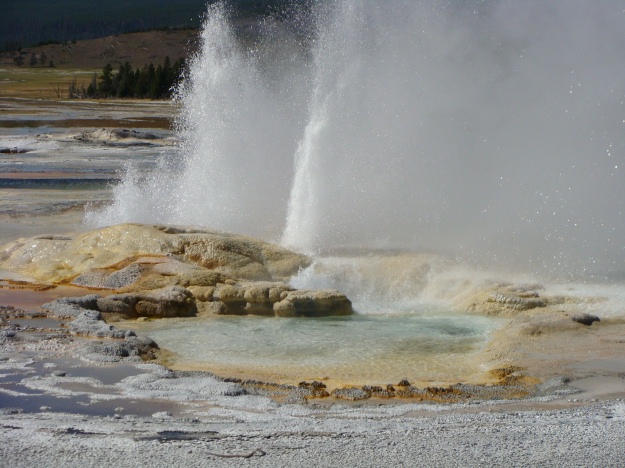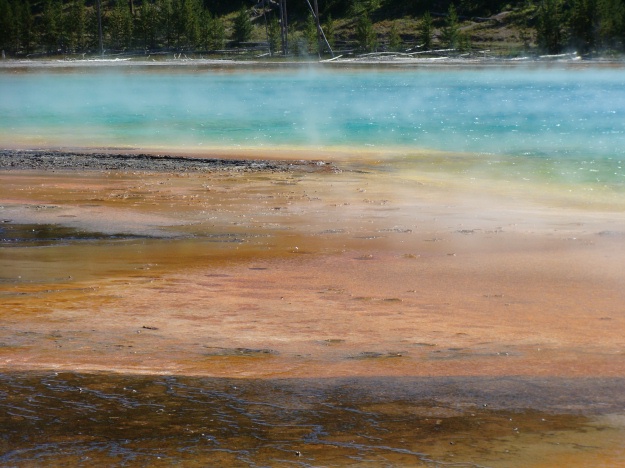The Teaching in the Field Workshop left Bozeman for a whirlwind tour of Yellowstone and the Tetons. Our goal was to actually think about teaching in the field — while in the field!! Some of us concentrated on how we could incorporate our surroundings (particularly Yellowstone) in modules for specific courses that we teach; others of us were more focused on devising a department field trip. I could not think of better surroundings. The field trip leader was Dave Mogk, petrologist at Montana State University, who has done much research in the area.
On the first leg of our journey from Bozeman to West Yellowstone, we stopped at a talc mine just south of Ennis, Montana. The talc mine is within the Montana metasedimentary terrane in a marble-hosted deposit. Nearby, we also looked at algomin-type banded iron formation exposures that contained small isoclinal folds. Afterwards, we headed toward Hebgen Lake to view the site of the 1959 earthquake that registered 7.5 on the Richter Scale and then onward to West Yellowstone.
When in Yellowstone, we were able to visit a number of locations, but we only concentrated on the western and southern portions of the park. Never being to Yellowstone before, I was able to visit Fountain Paint Pot in the Lower Geyser Basin and Grand Prismatic Spring, before driving south toward Grand Teton National Park. Along the way, Dave introduced us to the regional geology, discussing such topics as the Huckleberry Ridge, Mesa Falls, and Lava Creek eruptive events, the Absaroka volcanics, the thermal anomaly vs mantle plume argument, and the structural history of the area.




